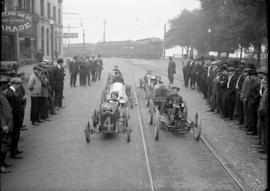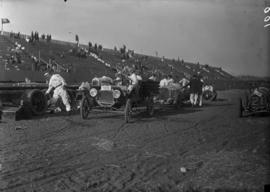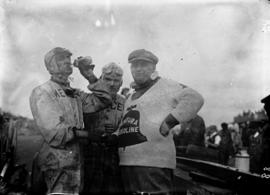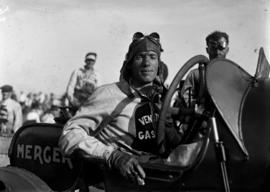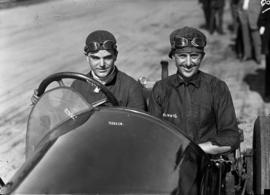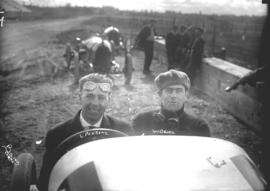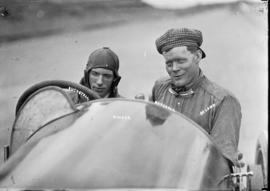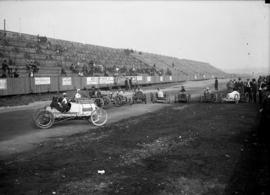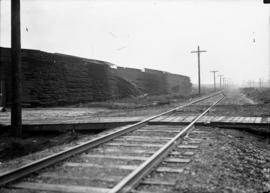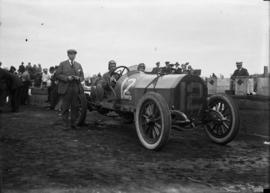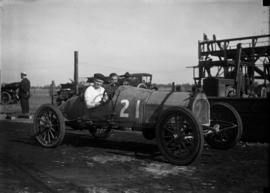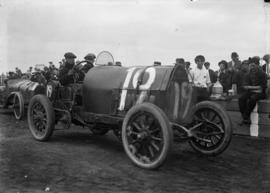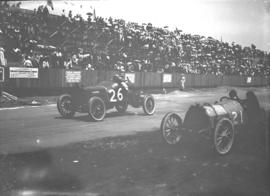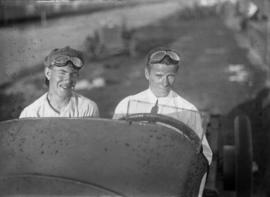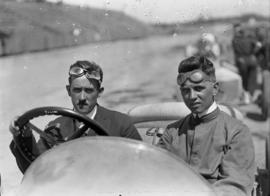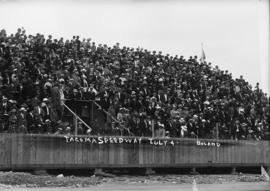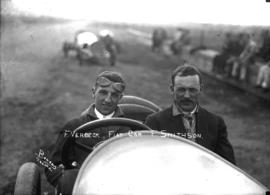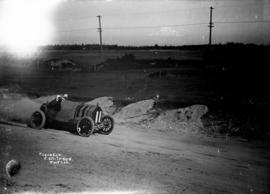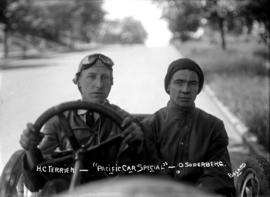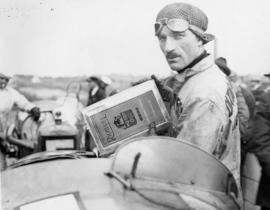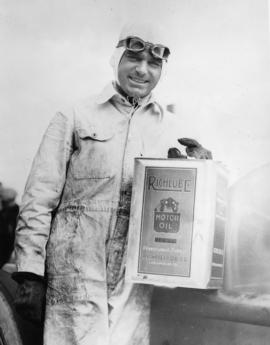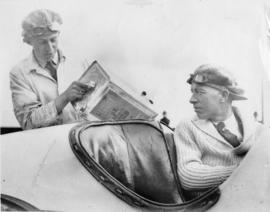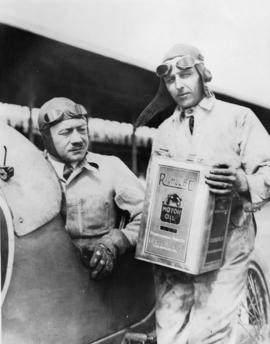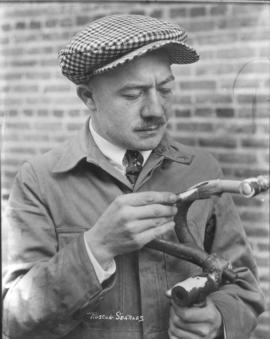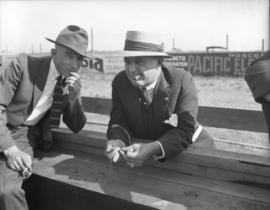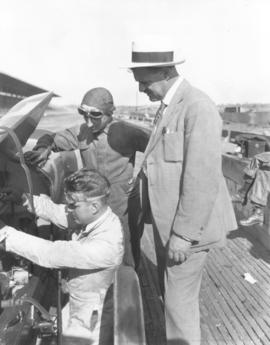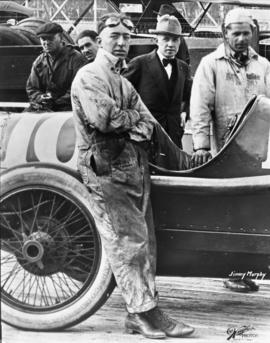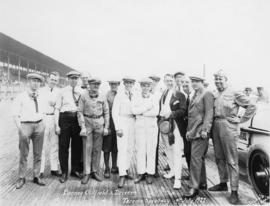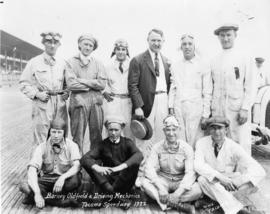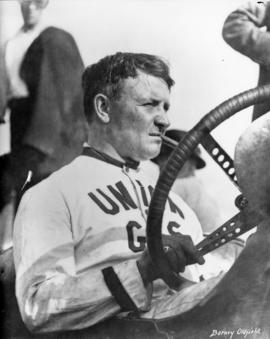- Item
- 1914-09
Part of Marvin Boland Photographs
In September of 1914, racing fever over miniature racers and their junior drivers took Tacoma by storm. The "cycle cars" were in town for Labor Day races scheduled at the Tacoma Speedway. Most of the cars and drivers were from California, although Tacoma boys Joe Rovegno, Clarence Healy, Phil "Babe" Sullivan and "Swift" were scheduled to race. All the boys were feted by Tacomans and felt that the city "sure did treat a fellow fine." Six of the cars and drivers are pictured on A Street. At the left rear is the Park Hotel, at 802 A St. The building at the front left may be the J.F. Hickey Motor Car Co., at 812-14 A St., and a Seattle-Tacoma interurban car provides the background. In the front row are: (l to r) veteran junior driver Mott Haynes in his Mercer and novice driver Walter Gossman in his Red Devil. In the center are Homer Loudenclos, in either the Peugeot or the Hudson he designed, and Al Bruce in his National. In the rear are an unidentified car and Shirley Williams in a Theim. The cars were designed and built, in most cases, by the drivers themselves. They were in some cases backed by the motor companies whose names they carried. It was common for companies to bankroll race cars as advertising.
Tacoma Speedway (Lakewood); Racetracks--Lakewood--1910-1920; Automobile racing--Lakewood--1910-1920; Racing automobiles--1910-1920; Haynes, Mott; Gossman, Walter; Loudenclos, Homer; Bruce, Al;
